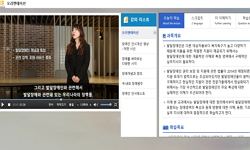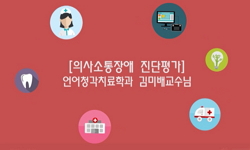2013년에 개정된 DSM-5(Diagnostic and Statistical Manual of Mental Disorders-5)에 나타난 신경발달장애는 장애아동 교육과 보육에서도 판정 기준과 장애진단 지원 방향 결정에도 영향을 미칠 것이다. 이에 ...
http://chineseinput.net/에서 pinyin(병음)방식으로 중국어를 변환할 수 있습니다.
변환된 중국어를 복사하여 사용하시면 됩니다.
- 中文 을 입력하시려면 zhongwen을 입력하시고 space를누르시면됩니다.
- 北京 을 입력하시려면 beijing을 입력하시고 space를 누르시면 됩니다.

DSM-5에 나타난 신경발달장애 아동의 보육서비스 진단체계 고찰 = Review of the Diagnosis System of Childcare Services in Children with Neurodevelopment Disorders in DSM-5
한글로보기https://www.riss.kr/link?id=A106625311
- 저자
- 발행기관
- 학술지명
- 권호사항
-
발행연도
2020
-
작성언어
-
- 주제어
-
KDC
370
-
등재정보
KCI등재
-
자료형태
학술저널
- 발행기관 URL
-
수록면
44-63(20쪽)
- DOI식별코드
- 제공처
-
0
상세조회 -
0
다운로드
부가정보
국문 초록 (Abstract)
2013년에 개정된 DSM-5(Diagnostic and Statistical Manual of Mental Disorders-5)에 나타난 신경발달장애는 장애아동 교육과 보육에서도 판정 기준과 장애진단 지원 방향 결정에도 영향을 미칠 것이다. 이에 본 연구자는 장애아동 중심으로 고찰 결과 첫째, 지적 장애에 대한 DSM-5의 가장 두드러진 특징은 지적 장애의 진단을 지능점수에만 근거해서 진단하지 않고 적응기능의 평가를 추가한 것에 있다. 적응기능은 개념적, 사회적, 실용적 분야의 세 가지 영역에서 결함의 심각 정도를 평가하게 되어 있다. 둘째, 자폐스펙트럼 장애(Austic spectrum disorders: 이하 ASD)’에서는 연령 제한이 사라짐으로써 이전과 같이 전반적 발달장애 하에 하위 범주로 구분하던 범주적 구분을 하지 않고, 모두 자폐스펙트럼 장애로 진단받으며, 공통된 행동 이상을 보이는 차원적 접근을 하고 있다. 셋째, 의사소통 장애에서는 일상생활의 기능을 중심으로 사회적 의사소통과 제한적인 관심과 반복행동 증상의 심각성을 평가하여 지원 정도를 결정하도록 하고 있다. 넷째, ADHD에서는 DSM-5차 개정을 거치면서 진단기준에 변화는 DSM-Ⅳ까지 증상 발현의 시기가 6세 이전이었던 반면 DSM-5에서는 12세 이전으로 변화하였다. 다섯째, 특정학습장애의 진단 시기가 초기 학령기에만 국한되지 않는다는 것을 명확하게 밝혔다. 후기 학령기에도 학습장애가 발견ㆍ진단될 수도 있다는 점을 강조하였다. 여섯째, 운동장애는 신경발달 장애의 원인은 중추신경계, 즉 뇌의 발달지연 또는 뇌 손상과 관련되어 있고, 운동장애는 나이나 지능수준에 비해 움직임이나 운동능력이 현저하게 미숙하거나 부적응적인 움직임을 반복적으로 나타내는 것이 특징이다. 라고 설명하고 있다. DSM-5에서는 좀 더 신경학적인 면에서 발달적 측면에 초점을 맞추려는 의도가 보인다. 이에 장애아동 교육과 보육서비스에서도 DSM-5 시스템에 맞는 판정 기준과 진단 도구개발 및 활용이 요구되고 있기 때문이다.
다국어 초록 (Multilingual Abstract)
The neurodevelopmental disability presented in the DSM-5 (Diagnostic and Statistical Manual of Mental Disorders-5), revised in 2013, will also influence decision criteria and the direction of disability support in education and care for children with ...
The neurodevelopmental disability presented in the DSM-5 (Diagnostic and Statistical Manual of Mental Disorders-5), revised in 2013, will also influence decision criteria and the direction of disability support in education and care for children with disabilities. The results of this study are as follows. First, the most prominent feature of DSM-5 for intellectual disability is the addition of assessment of adaptive function without diagnosis of intellectual disability based on intelligence score only. The adaptive function is intended to assess the severity of the defect in three areas: conceptual, social and practical. Second, in Austic spectrum disorders (ASD), the age restriction disappears, so that they are not classified as subcategories under the general developmental disability as before, but all are diagnosed as autism spectrum disorders. Is taking a dimensional approach. Fourth, in communication disorders, the degree of support is determined by evaluating the severity of social communication, limited attention, and repetitive behavior symptoms centering on the functions of everyday life. Fourth, in ADHD, DSM-5 changes were made before the change of diagnosis criteria to DSM-IV. Fifth, it was clear that the timing of diagnosis of specific learning disabilities was not limited to early school age. It was emphasized that learning disabilities may be discovered and diagnosed in later school age. Sixth, the cause of the neurodevelopmental disorder is related to the central nervous system, that is, the developmental delay of the brain or brain damage. It is characterized by. It explains. In DSM-5, the intention is to focus on the more neurological aspects of development. This is because education and childcare services for children with disabilities are required to develop and use criteria and diagnostic tools suitable for the DSM-5 system.
목차 (Table of Contents)
- Ⅰ. 서론 Ⅱ. 신경발달 장애(Neurodevelopmental Disorders) Ⅲ. 결론 및 제언 참고문헌
- Ⅰ. 서론 Ⅱ. 신경발달 장애(Neurodevelopmental Disorders) Ⅲ. 결론 및 제언 참고문헌
동일학술지(권/호) 다른 논문
-
- 한국유아교육·보육복지학회
- 안지혜(Ahn, Jee Hye)
- 2020
- KCI등재
-
맞벌이 가정 영아의 어머니 및 교사 애착안정성 비교 : 영아 기질의 영향을 중심으로
- 한국유아교육·보육복지학회
- 유주연(Yoo, Jooyun)
- 2020
- KCI등재
-
유아 교사의 인성, 행복감, 공감 능력과 교사 : 유아 상호작용 간의 구조 관계 분석
- 한국유아교육·보육복지학회
- 이혜진(Lee, Hye-Jin)
- 2020
- KCI등재
-
동물주제 말 리듬 놀이가 만 2세반 영아의 음악적 성향과 신체표현능력에 미치는 효과
- 한국유아교육·보육복지학회
- 김화란(Kim, Hwa-Ran)
- 2020
- KCI등재





 KCI
KCI 스콜라
스콜라






